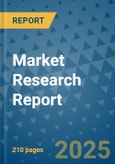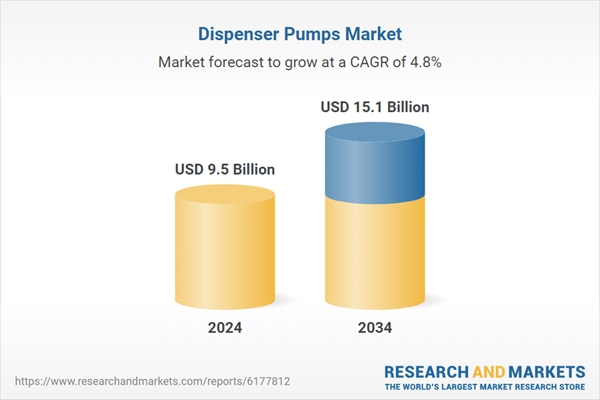Growing emphasis on hygiene, sustainability, and ease of use is fueling demand across industries. As global health consciousness rises, driven largely by shifts in consumer behavior post-pandemic, dispenser pumps have become the standard in various settings. Whether in healthcare facilities or homes, these pumps offer a clean and controlled way to dispense products like sanitizers, soaps, lotions, and household cleaners. Their adoption continues to grow due to their convenience, mess-free use, and precise output. Industries are increasingly leaning toward packaging that ensures cleanliness while supporting branding and user-friendly experiences.
In personal care and beauty, consumer preferences for innovative, functional packaging accelerate demand for advanced pump formats, including airless and multi-dosing systems. These pumps preserve product integrity while enhancing ease of use. Meanwhile, the rising push toward environmental responsibility is leading manufacturers to prioritize sustainable innovations such as refillable designs, recyclable plastics, and lightweight components. These advancements align with shifting regulations and consumer values around waste reduction and eco-friendly choices.
The lotion pumps segment generated USD 4.1 billion in 2024 and is expected to grow at a CAGR of 4.4% through 2034. Their widespread application in skincare and body care packaging is supported by their airless functionality, sustainability-focused designs, and appeal in the booming e-commerce and travel sectors. Brands continue to develop leak-proof, durable, and aesthetically refined pumps that meet both functional and visual expectations.
The non-metallic materials segment held 81.4% share in 2024 and is projected to grow at a CAGR of 4.9% through 2034. These materials offer lower production costs, light weight, and design flexibility, making them suitable for use in food-grade, medical, and personal care packaging. Their ability to support mass customization and sustainable practices is positioning non-metallic dispensers as a preferred choice among both consumers and manufacturers aiming to reduce environmental impact and improve consumer engagement.
United States Dispenser Pumps Market generated USD 2.3 billion in 2024 and is expected to grow at a CAGR of 5% from 2025 to 2034. Increasing demand for liquid-based hygiene products like sanitizers and soaps is driving adoption. At the same time, technological advancements such as IoT-enabled smart dispensers are gaining ground, especially in commercial spaces such as retail chains and hospitality services, offering real-time monitoring and automated usage tracking features.
Key companies actively shaping the Global Dispenser Pumps Market include TAPLAST, Scopenext, Ningbo Song Mile Packaging, Silgan Holdings, PKP Plastic Products, DARIN, Richmond Containers CTP, TYH Container Enterprise, Zhejiang Sun-Rain Industrial, Frapak Packaging, AptarGroup, Sanjiaozhou Enterprise, Unicom International, Guangdong Standard Fluid System Company, and Rieke. Companies in the dispenser pumps market are focusing on product innovation, sustainable materials, and global expansion to strengthen their market position. Many are developing airless pump technologies and leak-proof systems tailored for modern lifestyles. In response to rising environmental awareness, key players are also investing in recyclable plastics, refillable designs, and reduced-waste packaging formats. Collaborations with personal care and home care brands help improve visibility and align product development with consumer expectations.
Comprehensive Market Analysis and Forecast
- Industry trends, key growth drivers, challenges, future opportunities, and regulatory landscape
- Competitive landscape with Porter’s Five Forces and PESTEL analysis
- Market size, segmentation, and regional forecasts
- In-depth company profiles, business strategies, financial insights, and SWOT analysis
This product will be delivered within 2-4 business days.
Table of Contents
Companies Mentioned
The companies profiled in this Dispenser Pumps market report include:- Silgan Holdings
- AptarGroup
- Rieke
- DARIN
- Richmond Containers CTP
- TAPLAST
- Frapak Packaging
- PKP Plastic Products
- Unicom International
- TYH Container Enterprise
- Zhejiang Sun-Rain Industrial
- Scopenext
- Ningbo Song Mile Packaging
- Sanjiaozhou Enterprise
- Guangdong Standard Fluid System Company
Table Information
| Report Attribute | Details |
|---|---|
| No. of Pages | 210 |
| Published | September 2025 |
| Forecast Period | 2024 - 2034 |
| Estimated Market Value ( USD | $ 9.5 Billion |
| Forecasted Market Value ( USD | $ 15.1 Billion |
| Compound Annual Growth Rate | 4.8% |
| Regions Covered | Global |
| No. of Companies Mentioned | 16 |









